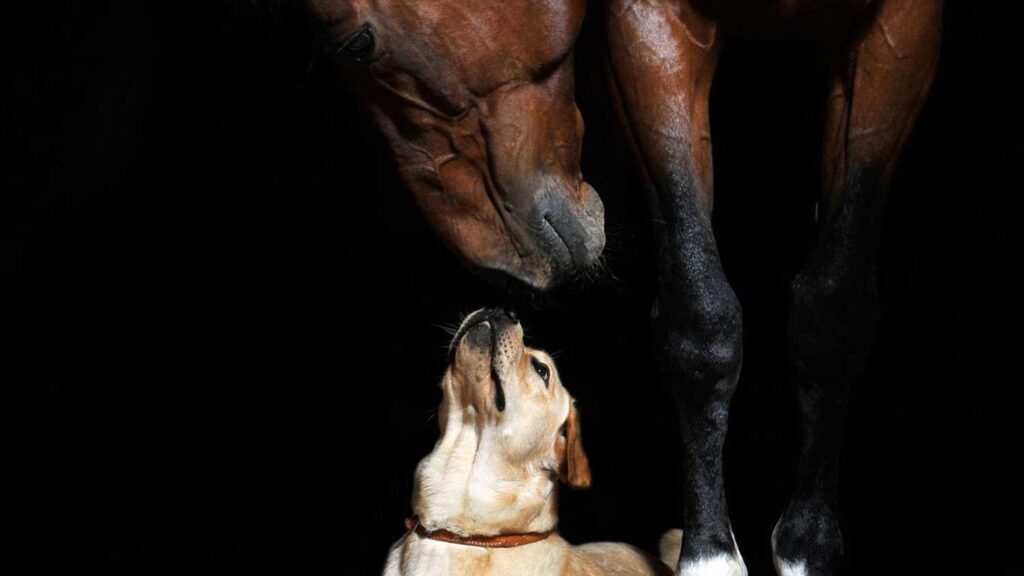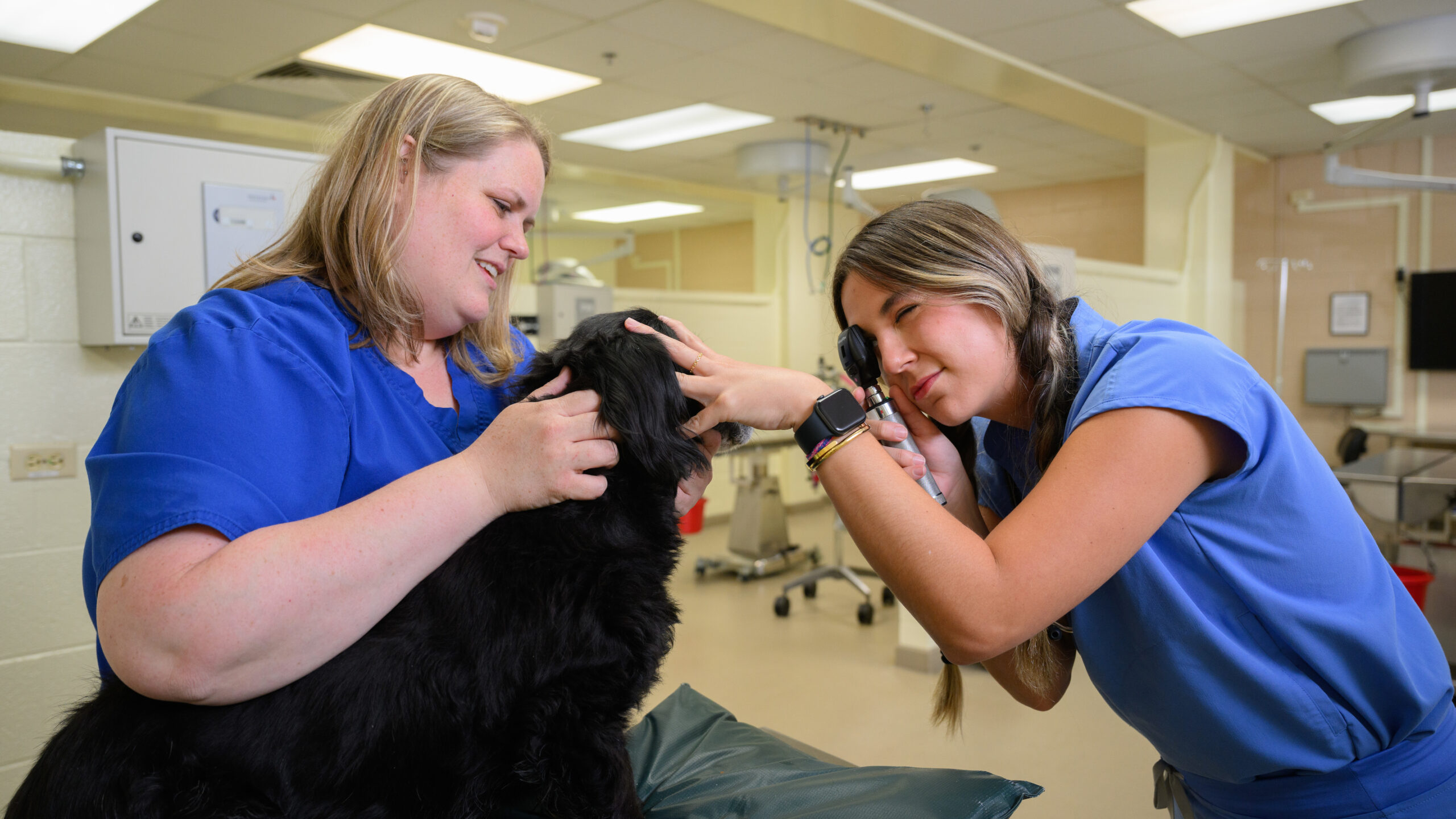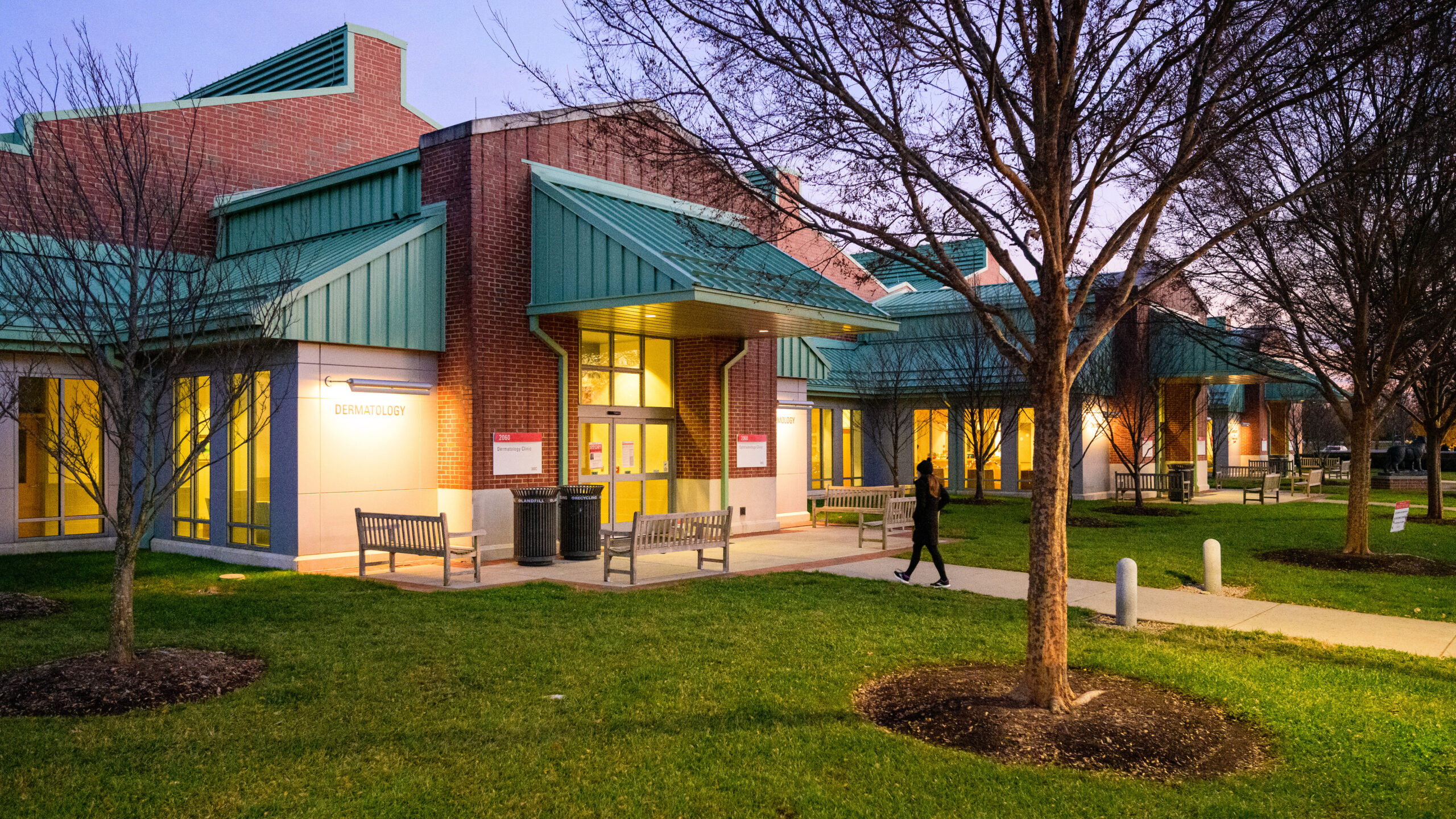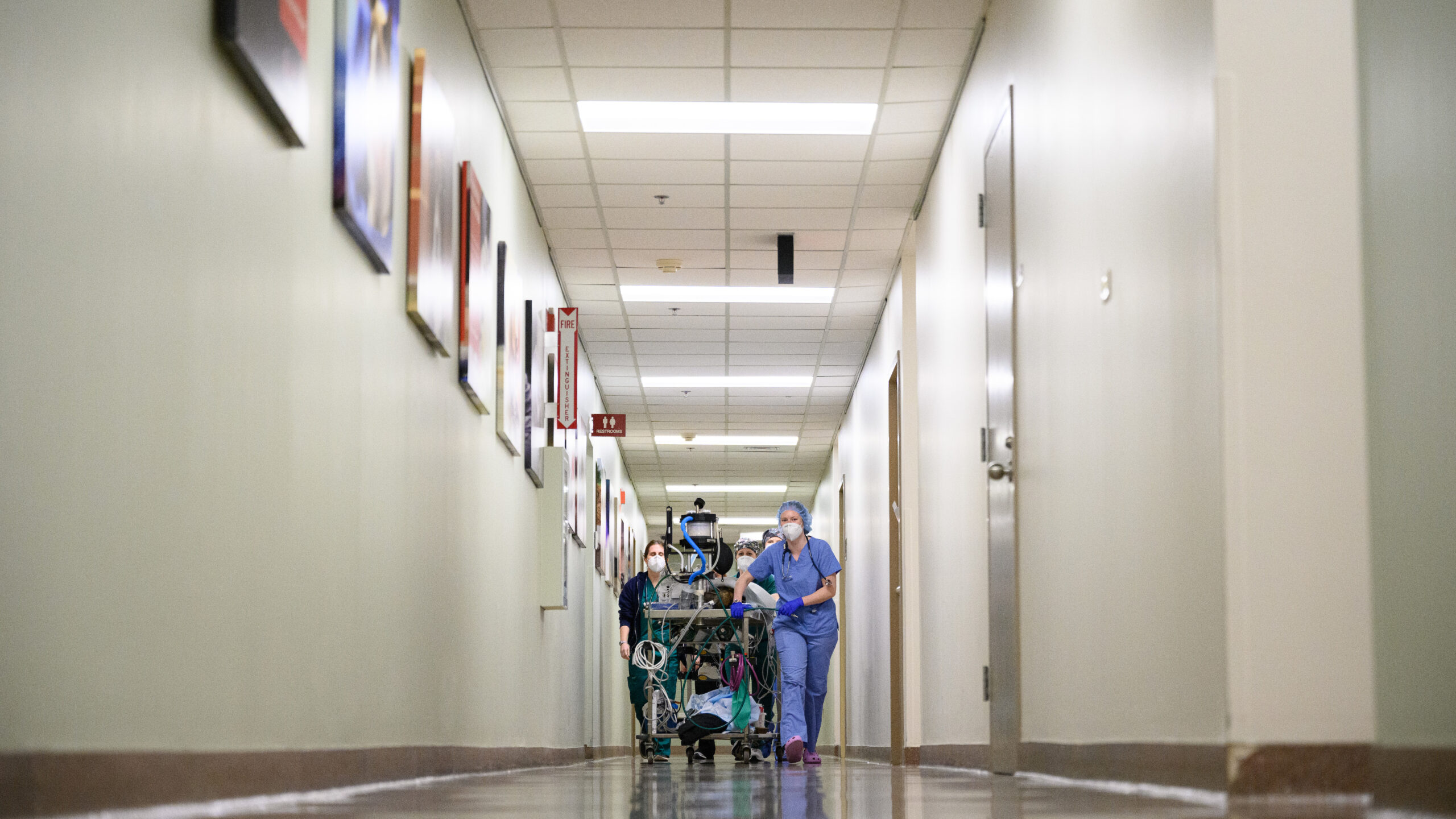Family Community Services
Animals are family members, confidantes, partners, and best friends. We support the human-animal bond between people and their animals when those bonds are tested.

Overview
Supporting the human-animal bond between people and their animals is an important part of what we do, especially when these bonds are tested by illness, behavior problems, injury, or death. We are here to help you.
At NC State’s Veterinary Hospital, the veterinary social worker is a mental health professional whose job is to help you find solutions to the issues arising during the course of your animal’s medical treatment. Our veterinary social worker is a licensed clinical social worker whose specialties include human-animal relationships, traumatic loss, and grief counseling. While social workers have been working in health care since the beginning of the 20th century, the integration of social workers in veterinary medicine is a relatively recent development. The VH is one of only a handful of veterinary facilities in the country to include a social worker on the veterinary medical team with the goal of providing family-centered care.
Contact Us
- Hours: Monday through Friday, 8 a.m to 5 p.m
- Phone: 919-513-3901
- Email: ncstatevetfcs@ncsu.edu
What Can Family and Community Services do for You
Navigating a large medical system can be overwhelming, especially when you are advocating for a loved one who can’t tell you what is wrong. At the VH, we recognize that your animals are a beloved and integral part of your life – and you want to “do right” by them when they become sick or injured. Our clinical counselor is available to support you every step of the way.
Consultations are available for:
- Making complicated treatment decisions
- Addressing family conflict and crisis
- Managing the demands of chronic illness
- Problem-solving financial constraints
- Planning for end of life transitions
- Adjusting to the death of a loved animal
Appointments
Clients of the veterinary hospital may ask any member of the veterinary team for a referral to Family and Community Services. Alternatively, you may call the social worker directly at (919) 513-3901 to schedule a consultation.
Counseling services are confidential and available to all current hospital clients free of charge.
Resources
Healing after loss
Grief is the normal, natural process of adjusting to the loss of a loved one. We cannot go through life without being touched by grief. Contrary to popular belief, grief does not unfold in clean, linear stages, nor does it have a timeline.
The loss of an animal is often just as difficult, if not more so, than losing a human family member because our relationships with our animals are remarkably intimate and mutually supportive – they love us ‘no strings attached,’ hold our secrets, and accept us as we are. When daily routines center around caring for an animal, their death can also disrupt our sense of home, our sense of safety, our sense of purpose, and our sense of identity.
It is important to remember that grief is a full body experience that can impact our mind, our feelings, our social relationships, and our beliefs about the world.
Grief ‘symptoms’ can include:
Physical:
- aches and pains
- exhaustion and insomnia
- dehydration
- nausea or loss of hunger
Emotional:
- guilt & despair
- rage
- anxiety & relief
- yearning
Cognitive:
- preoccupation with an animal’s illness and death
- distraction
- rigidity/lack of flexibility
- confusion
Social:
- isolating from friends, social circles, and loved ones
- using work to avoid going home
- rigidity/lack of flexibility
- avoiding social situations
Spiritual:
- anger at Higher Power
- searching for meaning
- questioning what happens after death (“is my animal okay?”, “where is my animal now?”, “do animals have souls?”)
What can I do to help myself heal?
After a loss, it is important to tend to your broken heart, and in whatever way that feels safe to you, allow yourself to feel the pain of the loss. Most people find comfort in maintaining daily routines and creating rituals to honor their animal’s memory. When humans die, the process of mourning often includes obituaries, funerals, and public memorials. Doing the same for a loved animal honors their life while also giving others a chance to support you.
Talking to others who can listen to your stories and feelings without judgment can help — most grievers want to know that they are normal, their feelings are valid, and they are not alone.
When will I get over this?
It is common for people to want to feel better. On the other hand, it is also normal for grievers to fear feeling better because that might mean letting go of — or betraying — a loved one. Keep in mind that grief is not something we get over, but something we move through. When we lose someone whose presence changes us (often for the better), we can’t help but be changed, too, by their death. The process of coming to terms with a death can take a long time, but you will eventually find your way to a place where the pain of your animal’s absence is less of a focus than the positive, loving memories that come to mind when you remember them.
Would talking to someone help?
If you are significantly preoccupied with questions or guilt about your animal’s death, have witnessed the acute injury or traumatic death of your animal, or are feeling “stuck” in any aspect of your grief, it might be useful to connect with a professional who can provide extra support. The Veterinary Hospital has counselors who understand how difficult it is to lose an animal. Please call us at (919) 513-3901.
Recommended Reading
- Abercrombie B. (Ed.) (2011). Cherished: 21 writers on animals they have loved and lost. New World Library.
- Gatto, K. (2005). Beyond the rainbow bridge: A thoughtful guide for coping with the loss of a horse. Half Halt Press.
- Greene, L. & Landis, J. (2002). Saying goodbye to the pet you love. New Harbinger Publications.
- Kowalski, G. (2012). Goodbye, friend: Healing wisdom for anyone who has ever lost a pet. Stillpoint Publishing.
- O’Neill, E. (1999). The last will and testament of an extremely distinguished dog. Henry Holt & Company.
- Wolfelt, A. (2004). When your pet dies: A guide to mourning, remembering, and healing. Companion
Helping children through animal loss
The death of an animal is often a child’s first experience with the cycle of life. It is also a valuable opportunity to teach children that death is natural and universal. Parents often want to protect their children from the painful realities of the world – death included. While this is understandable, many parents are often surprised with how matter-of-fact children are about death and dying – especially when adults explain death in honest and simple terms.
In general, children of all ages need simple, honest information about what death means and what death looks like. When discussing euthanasia and death, it is best to use concrete words and simple explanations. Additionally, it is important to avoid the use of jargon (such as “putting Fluffy to sleep”) that can be easily misunderstood. Young children may need to know that bodies stop working when they die (bodies can no longer hear, feel, see, or taste) and that death is permanent. Older children may need to know what condition led the body to stop working and why that condition could not be cured by a veterinarian.
Some things to keep in mind
- Offer to answer any question your child may have – even the silly, scary, or complicated ones. These questions may pop up at any point before or after the death of a loved animal. Be as open as possible about the details your child needs to know, as those details may help them to make sense out of what has happened. For assistance answering kids’ nitty-gritty questions about death (such as “what is cremation?” or “what happens after a body is buried?”), please contact our counselors at (919) 513-3901.
- When possible, provide children with an age-appropriate way to say goodbye to their animal. If your family is preparing for the death of an animal, either through euthanasia or an unassisted death, it is appropriate to ask your child how he/she wants to say goodbye to their animal. Writing a goodbye letter, drawing a picture to bury or cremate with the remains, or having a celebration before death (a “goodbye party” with treats and storytelling) gives children a chance to achieve closure. It can also be helpful to provide children with an opportunity to be involved in memorialization rituals.
- Listen without judgment and support the need to grieve.Children may have any number of responses to loss, including tearfulness, sleep disturbance, anxiousness, bedwetting, and impaired concentration atschool. These responses are normal and often temporary. Invite your child to talk about their feelings and reassure them that these feelings are okay. Children with less developed verbal skills often benefit from having non-verbal opportunities to process grief. Crafting scrap books or memory boxes, or creating a collage of mementos, can give form to important feelings.
- Avoid re-storying a death. It can be tempting to create an alternative story to why an animal is no longer present (e.g. “he went to live on a farm.”) Surprisingly, though, children often find out about an animal’s death – sometimes many years after the death has occurred. Children are better equipped to understand and cope with loss over the course of their lifetime if death is explained in a clear, sensitive, and timely manner.
- Find comfort in routines and play. All creatures, whether human or animal, find comfort in the daily routines that give our days form and focus. Maintaining the normal daily schedule for meals, bedtime, and play time is an important part of coping with a life-changing loss. Laughter – or taking a break from the sadness – also serves as a healing salve for hurting hearts.
- Make space for remembering. Encourage children to share favorite stories about their animal and to remember the happiest times with that animal. Those memories are part of the natural healing process and can provide great comfort months, and even years, after an animal’s death.
Recommended Family Reading
- Buscaglia, L. (1982). The fall of Freddie the leaf: A story for all ages. Slack Book Division.
- Cardeccia, K. (2004). Healing your heart when your animal friend is gone: A children’s pet bereavement workbook. Bree’s Gift Publishing.
- Carney, K. (1999). Our special garden: Understanding cremation. Dragonfly Publishing.
- Heegaard, M. (2001). Saying goodbye to your pet: Children can learn to cope with pet loss. Fairview.
- Rogers, F. (1988). When a pet dies. Putnam Publishing Group.
- Rylant, C. (1996). Cat heaven. Blue Sky Press.
- Rylant, C. (1995). Dog heaven. Blue Sky Press.
- Viorst, J. (1971). The tenth good thing about Barney. Atheneum.
- Yue, S. (2012). Snort’s special gift: A family story. Beaver’s Pond Press.
Helping your pets through animal loss
The loss of a beloved animal companion can be very difficult, and grief is a natural response to this loss for humans and animals alike. After the loss of a pet, the remaining animal companions in the household may experience grief or a distress reaction to the loss and the changes in their daily routine.
Pets may demonstrate grief with a number of different signs or symptoms, such as:
- Decreased appetite
- Changes to sleep patterns
- Withdrawal
- Aggression between pets
- Disinterest in their usual activities
- Clinginess
- Aimless wandering
- Increased vocalization
How you can help
Consult with your veterinarian. Talk to your primary veterinarian about your pet’s symptoms, to help determine the best course of action.
Start “new normal” daily routines. Consistency and predictability are important for our companion animals, as it helps to ease their anxiety and cope with the life changes.
Monitor your pet’s appetite. Your pet may have a decrease appetite due to confusion with a new routine, or if the lost pet was one to initiate feedings. It’s important to keep your pet’s diet the same. Although it can be tempting to offer people food or extra treats, added calories can be stressful on your pet’s body. It also can result in your pet becoming even less interested in their regular food. Consult with your veterinarian to help determine best steps.
Praising and ignoring behavior. When grieving, sometimes pets may develop unwanted and out-of-character behaviors. Ignore those behaviors when you can, and instead promote the calm/desirable behaviors by praising your pet when they demonstrate those. If unwanted behaviors cannot be ignored, calmly interrupt the behavior and redirect your pet to more appropriate behaviors such as obedience commands like sit or stay.
Time. Pets may need time to adjust. For some pets it can take between two weeks and six months before they return to their normal behavior, we suggest that you wait at least one month before pursuing medication.


